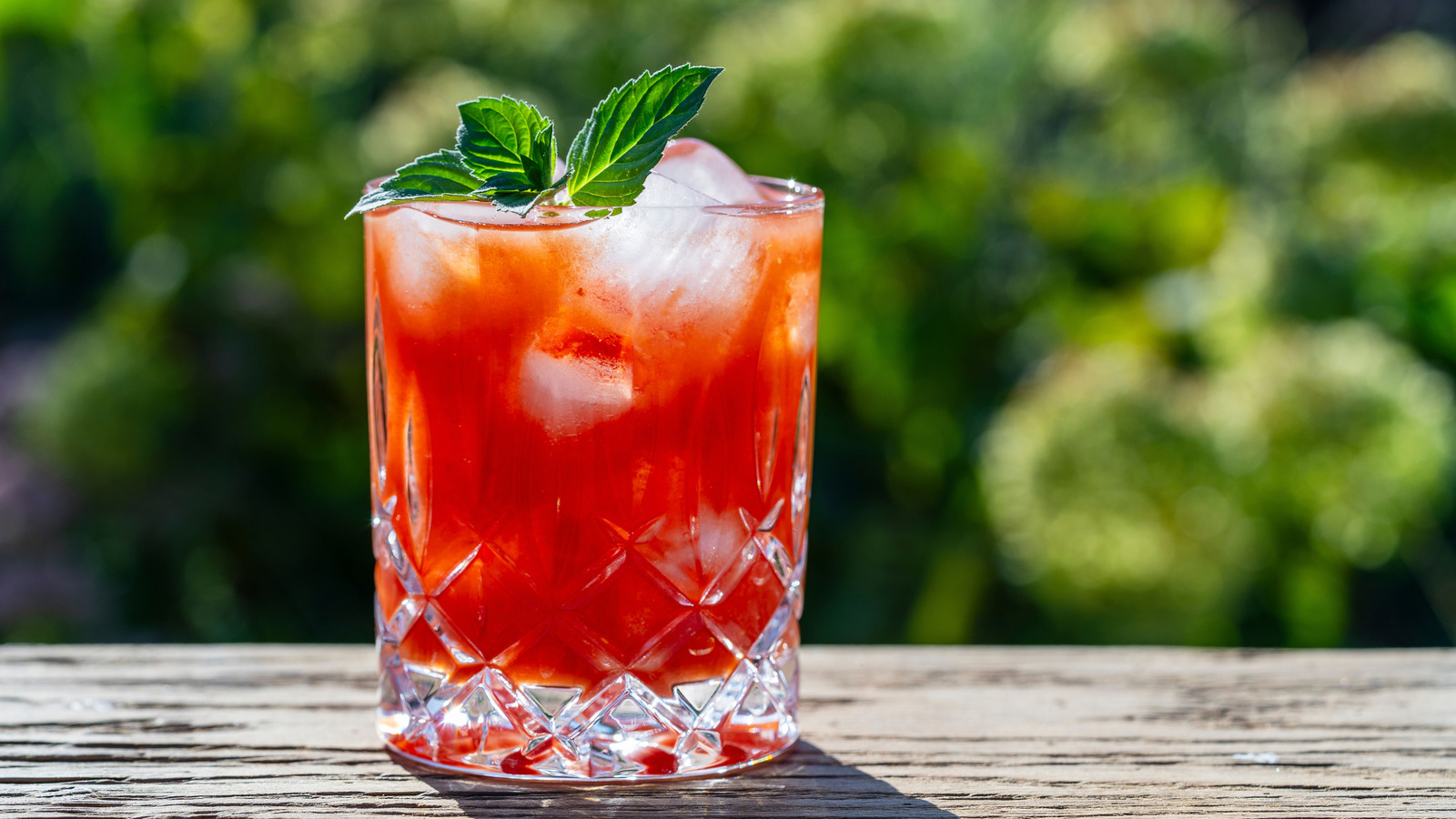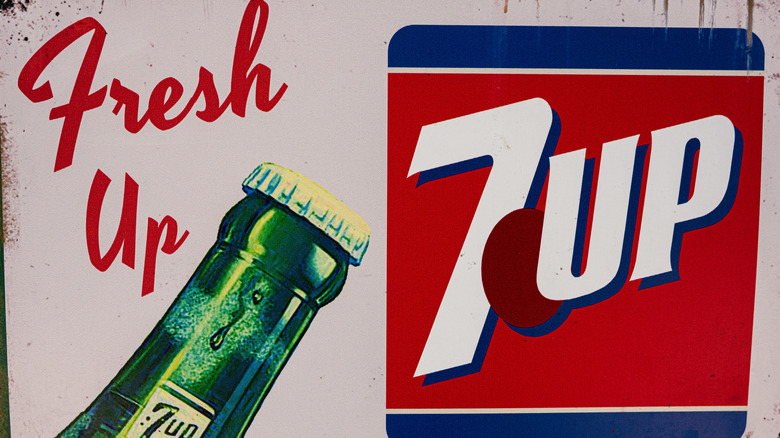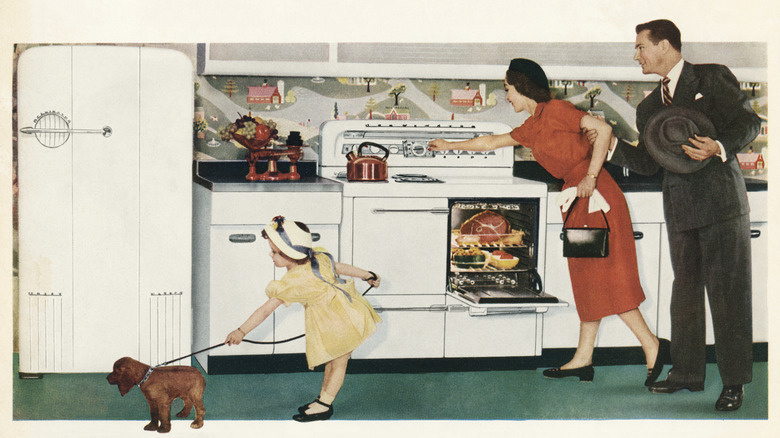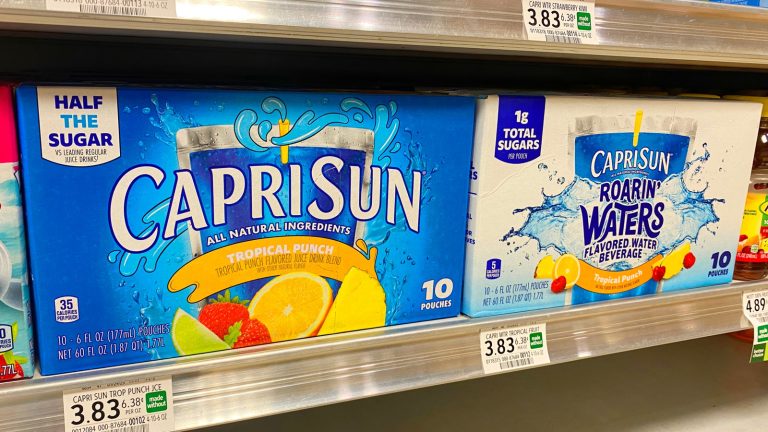If you’re looking to live a bit of your “Mad Men” fantasy but without the workplace drama, one easy way is to try some throw-back recipes. A great vintage option is a 1950s mocktail made with tomato juice and 7-Up soda. That’s right — think of a sort of bubbly Bloody Mary that mixes tomato juice with the sparkle of lemon-lime soda.
Suggested in the 1957 branded recipe book “You’re Really Cooking When You’re Cooking with 7-Up,” this concoction is the result of some mid-century culinary marketing genius. With vibrant illustrations and cheerful slogans, the booklet was an expanded advertisement sold to American housewives, urging them to explore the “sparkling new flavor” of 7-Up in everything from meats to mocktails.
This mocktail recipe calls for a 14-ounce can of tomato juice, 14 ounces of chilled 7-Up, and just half a teaspoon of celery salt. The tomato juice is chilled in advance, and then combined with the soda just before serving. Though it may sound bizarre, modern reviewers have said it wasn’t bad and would be nicely paired with some shrimp cocktail.
Other whimsical 7-Up recipes from the soda-centered cookbook
If tomato juice and soda don’t convince you of 7-Up’s kitchen versatility, the rest of “You’re Really Cooking When You’re Cooking with 7-Up” just might. This 1957 cookbook brims with ambition, featuring dishes like 7-Up Glazed Ham, 7-Up Fish Fillets, and even 7-Up Baked Beans.
Even desserts got a bubbly boost. Cooks were promised “never before have you had a cake so light, so airy, so high, and with such a delightful new flavor” for a 7-Up Angel Food Cake, while the Emerald Isle Fluff — a green, coconut-marshmallow confection — offered a “party dessert” with soda-fueled fluffiness. The cookbook’s logic was simple: Wherever you might add water or even milk, 7-Up could do it better — with “sparkle” and “zest.”
Beyond novelty, these recipes reveal a marketing campaign to convince consumers the soda wasn’t just a drink — it was a flexible ingredient, designed to save time and add flair. The famed 7-Up Jello salad with maraschino cherries and canned pineapple, (not in this cookbook but also popular in the decade), followed a similar logic.
1950s foods and the rise of convenience cuisine
Would anyone from the 1950s have actually enjoyed a tomato juice and 7-Up mocktail or a ham glazed with the soda? The answer is probably! The ’50s was the golden age of convenience food, when speed, spectacle, and a pinch of kitsch ruled the American kitchen. Following World War II, technologies developed for the military, like powdered mixes and canned goods, made their way into everyday meals. Companies like 7-Up rode this wave, positioning soda not just as a beverage but as an ingredient for the creative, time-conscious homemaker.
The food industry at large cultivated a sense of urgency, telling women they didn’t have time to cook the old-fashioned way and should buy pre-packaged foods. At the same time, companies had to pitch that using processed products didn’t make them lazy, but made them modern. So advertisements promised that using cake mixes or canned meat wasn’t a shortcut, it was creative. The role of the housewife was all-important, and the ideal housewife could whip up an elaborate, colorful meal using nothing but pantry staples and maybe a little soda fizz.
Additionally, many quirky recipes from the 1950s also combined sweet and salty flavors that may seem antithetical to the modern American palette — think Jell-O and cheese hors d’oeuvres, or tuna on waffles. So a bit of salty tomato juice and fruity soda may have fit right in!







